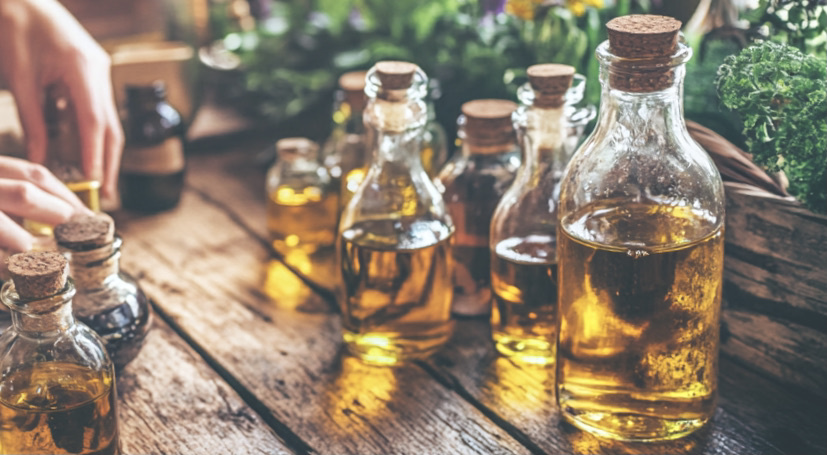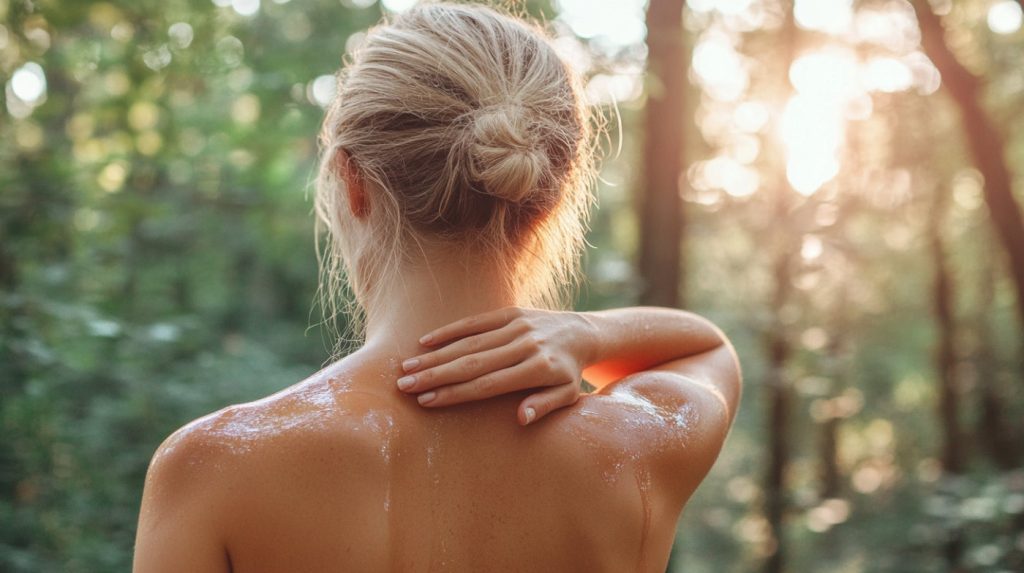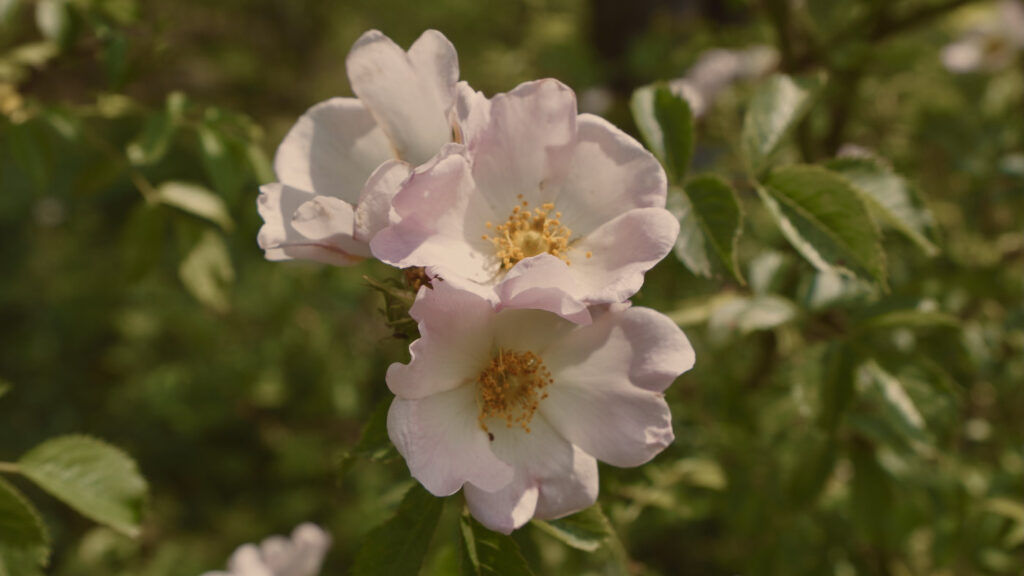A herb-infused vinegar is chopped medicinal and nutritious plant material steeped in apple cider vinegar for some time, 4-6 weeks, and then strained through a muslin cloth or sieve, with the plant material being disposed of. What is left is vinegar that has absorbed lots of medicinal properties from the plant(s) and can be used both internally and externally to promote health.
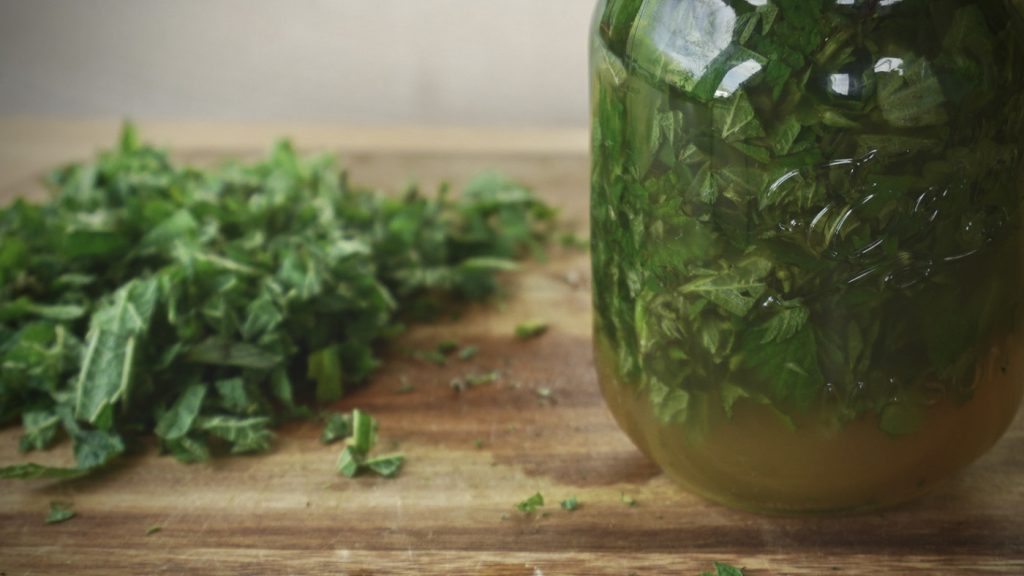
Infusing herbs in apple cider vinegar is a great way to increase and preserve their nutrients and medicinal properties while at the same time introducing healthy vinegar to your diet which alone holds extremely beneficial qualities. When organic and unfiltered, apple cider vinegar contains enzymes and friendly bacteria, making it good for digestive health and promoting healthy hair and skin, to name a few of its many health benefits.
Step-by-Step Instructions
1. Be well prepared and ready with clean surfaces to work on, and tools including a glass jar with a lid, a knife, blender or pestle and mortar. Avoid using a metal lid as when vinegar touches metal, it eats through it and metal pieces drop into the vinegar. Alternatively, you can place a parchment paper or wax paper over the jar before you screw the lid on.
2. Blend or chop your herbs and place them in your jar, about 3/4 full. Berries I infuse whole, however. Fresh and dried plants can be used interchangeably though fresh infused vinegars will have a slightly shorter shelf life than dried infused.
3. Fill the remaining space in the jar with vinegar. Make sure all plant material is submerged in the vinegar and that the jar is filled to the brim, at least when fresh plant material is used.
4. Cap the jar tightly and make sure no metal gets in contact with the vinegar. Label with the date and herbs used and place your jar somewhere safe and where you won’t forget to shake it every day.
5. After 4 to 6 weeks, strain the herbs out of the vinegar using a muslin cloth. Make sure to really squeeze out as much of the vinegar as possible. The remaining plant residue can go into the compost.
6. Store your herbal vinegar in a clean container somewhere cool, dark and dry. Your vinegar should last for about a year, just make sure you use a plastic or cork lid and not metal.
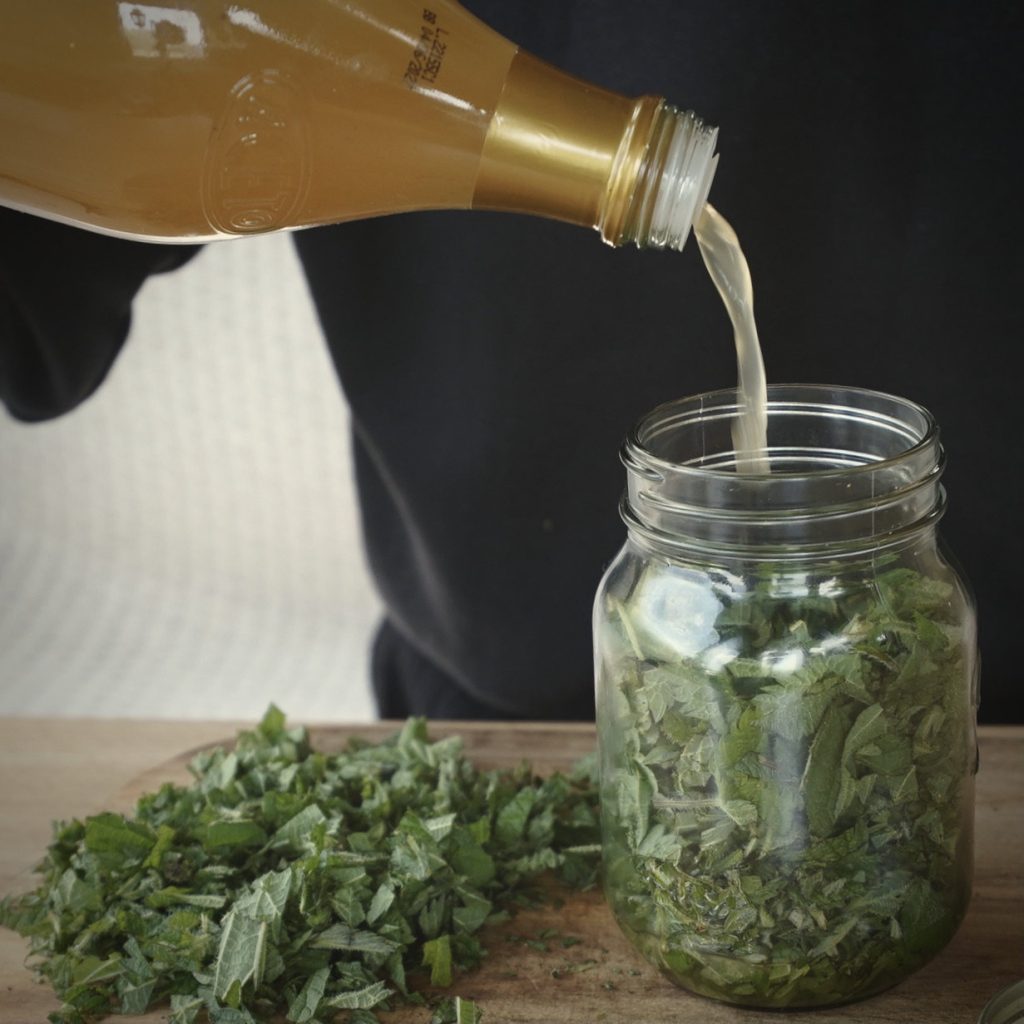
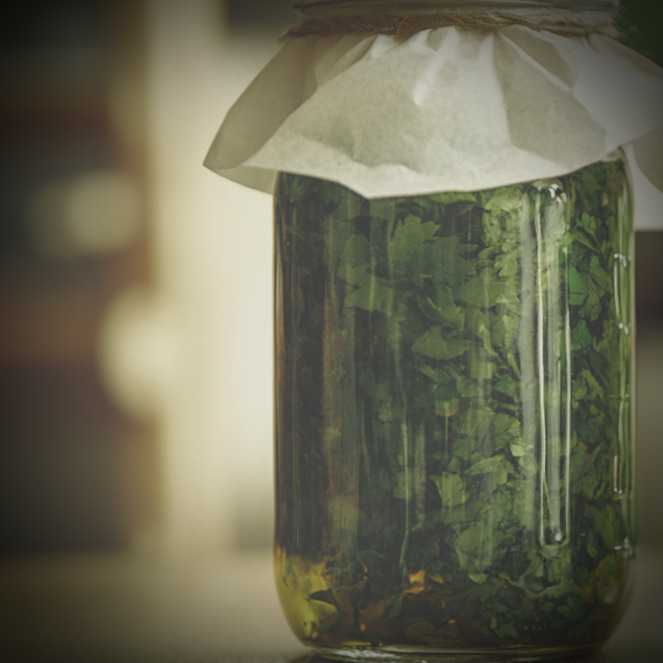
Turn into an Oxymel
Add honey to your herbal vinegar and you’ve created an oxymel and an even healthier remedy with the impressive benefits of honey. Use raw local honey for best results. You may add the honey already at the beginning or after you’ve strained the vinegar. If I have the intention to make an oxymel from the beginning, I always add honey as I’m preparing the infused vinegar. I believe the end result is better that way, however, I’m not basing that on anything other than that some of the plants’ properties are then also absorbed into the honey. How much honey you use is entirely up to how sweet you like it and how much you dislike the taste of vinegar, I guess. Most recipes will say equal amounts of vinegar and honey though I personally think that makes a slightly too sweet remedy. You’ll be your judge. Oxymels are just brilliant for internal use as medicine and as general nutritional value to your meals.
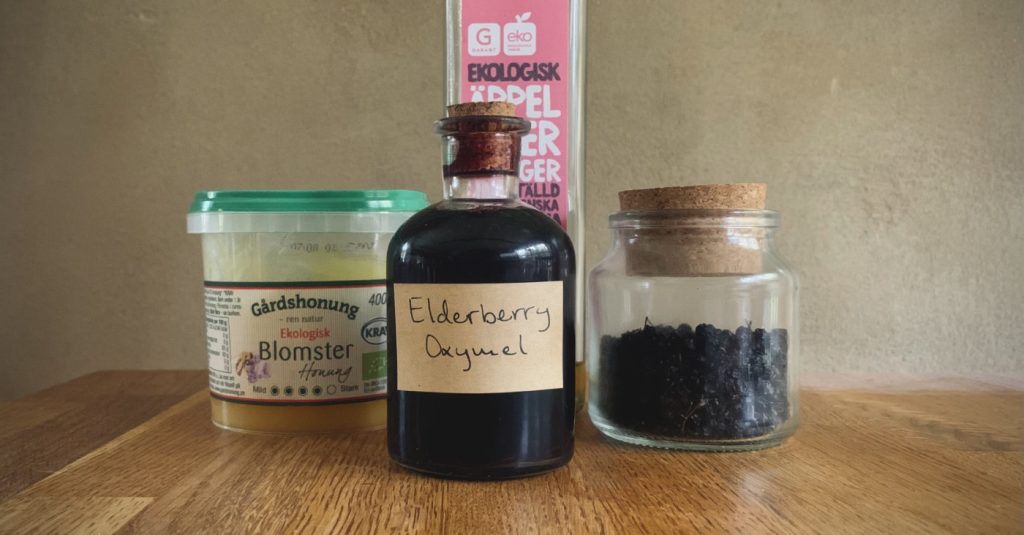
Suggestions and uses of herbal vinegars and oxymels
Herb-infused vinegar and oxymels are extremely versatile with many different uses. As long as you know your herbs, their contraindications and how to use them safely the possibilities are endless. Below I’ve listed a few ways in which herb-infused vinegars can be used and some herbs I like to work with.
Hair rinse
With a ratio of about two tablespoons of vinegar to two cups of warm water rinse the scalp and hair after having shampooed, leave it in for a few minutes and rinse it out. The vinegar helps remove buildup and restore the scalp’s natural acid mantle and may treat an itchy scalp, dandruff, and dull hair and give it shine. Stinging nettle (Urtica dioica) and rosemary (Salvia rosmarinus) are both great for hair health and growth when used this way.
Salad dressing
An oxymel made with your favourite tasting herbs together with some olive oil makes a wonderful healthy salad dressing. If you’ve been in the herbal world for a while you might be familiar with Rosemary Gladstar’s Fire cider remedy. A legit immune booster made with pungent roots and spices like horseradish (Armoracia rusticana), ginger (Zingiber officinale) and cayenne (Capsicum annuum) that’s super tasty in a salad. I highly recommend to Google search and trying her recipe.
Sparkly drink
Like with cordial, dilute your oxymel with sparkling water and you’ve made yourself a real fresh drink. Berry oxymels are great for this – elderberry (Sambucus nigra), hawthorn (Crataegus monogyna) and blueberry (Vaccinium myrtillus) to name a few. Herbs like Lemon balm (Melissa officinalis) with its lemony flavour is a favourite of mine as well as nettle (Urtica diocia), elderflower (Sambucus nigra) and wood sorrel (Oxalis acetosella) in combination or on their own.
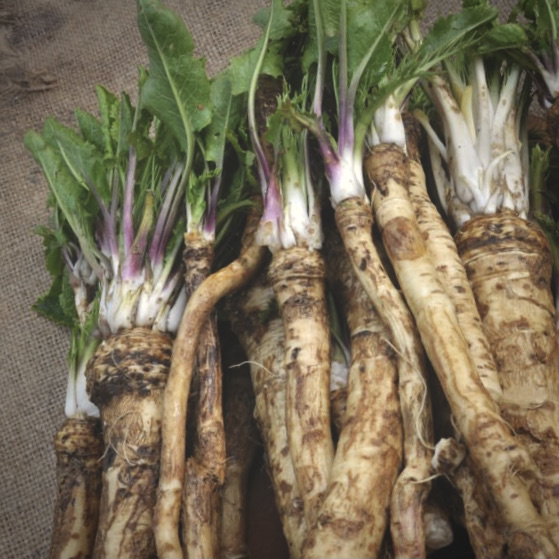
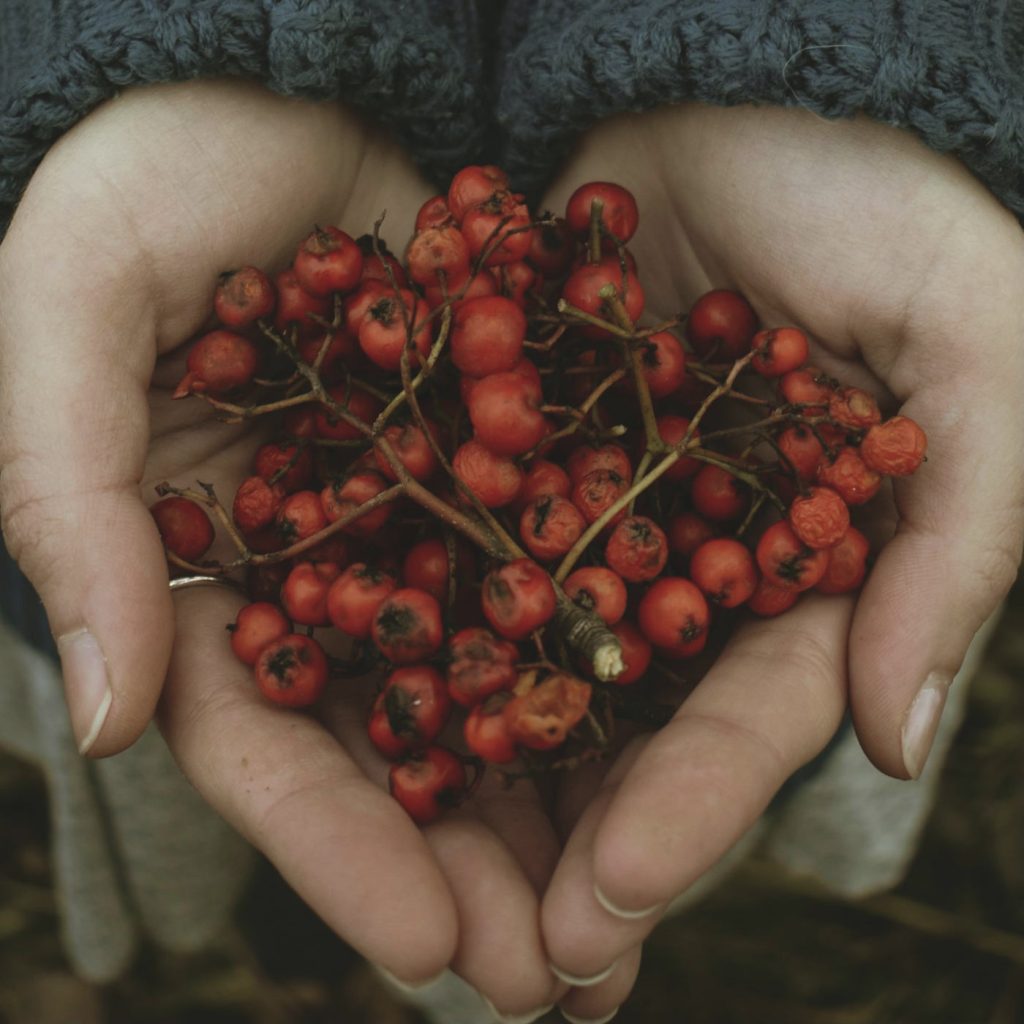
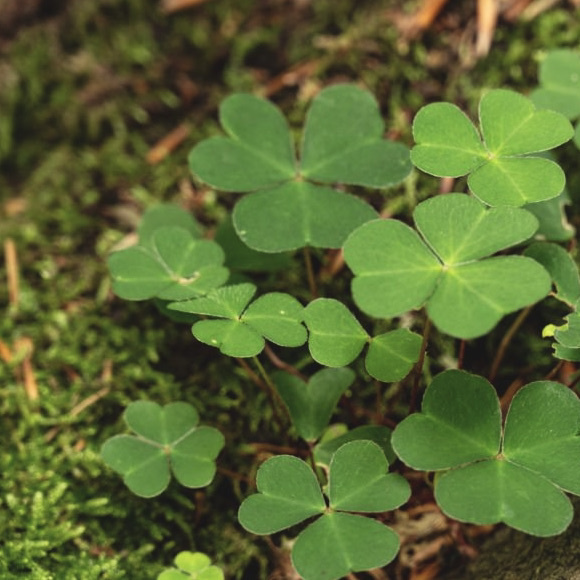
Making herb-infused vinegar is fun and easy and serves many versatile uses. A perfect craft for the beginner herbalist!
Love, Sarah Águsta


